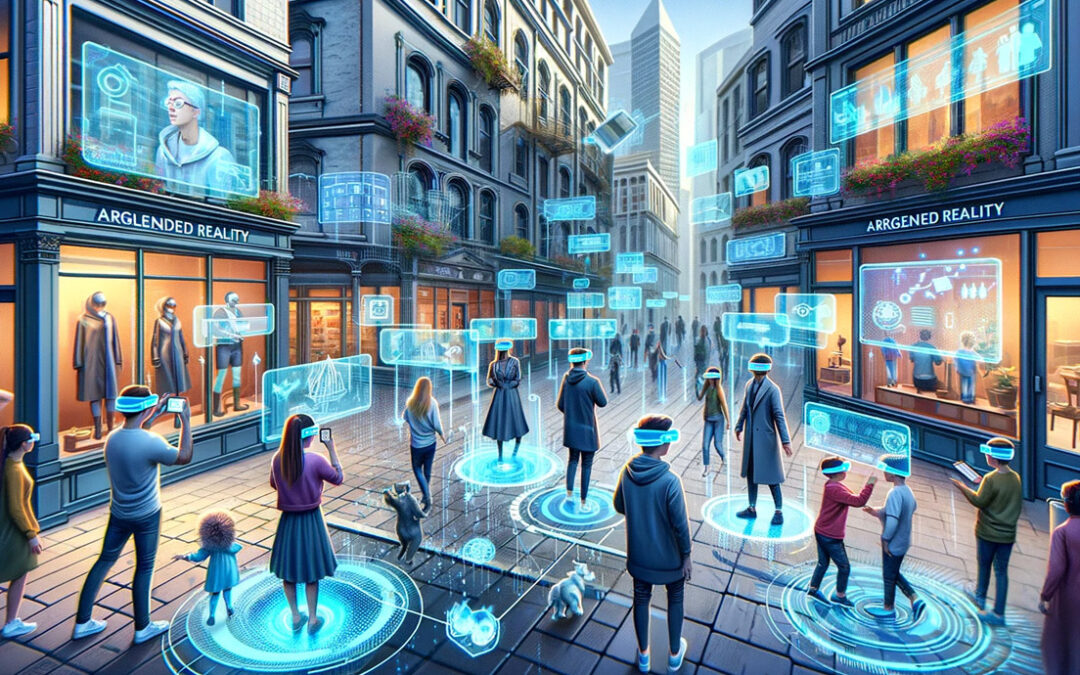Introduction
In the landscape of technological innovation, few advancements hold as much promise and fascination as augmented reality (AR). Augmented reality represents a seamless integration of digital content and the physical environment, offering a transformative bridge between the realms of the virtual and the tangible. In this exploration, we uncover the multifaceted nature of AR, its applications across diverse industries, and its potential to reshape the way we perceive and interact with the world around us.
Understanding Augmented Reality
Augmented reality is a technology that overlays digital information, such as images, videos, or 3D models, onto the real-world environment. Unlike virtual reality (VR), which creates entirely immersive simulated environments, AR enhances the existing environment by adding virtual elements, creating an amalgamation of both worlds.
Key Components and Functionality of AR
Sensory Input: AR relies on various sensory inputs, including cameras, sensors, and GPS data, to understand and interpret the user’s surroundings in real-time.
Digital Overlay: Through specialized devices like smartphones, smart glasses, or headsets, AR superimposes digital information onto the user’s view of the physical world.
Interaction and Immersion: Users can interact with AR elements, manipulate digital objects, and receive contextual information that enriches their real-world experience.
Applications Across Industries
Education and Training: In education, AR enriches learning experiences by providing immersive visualizations of complex subjects, interactive historical reconstructions, and simulations that enhance understanding.
Retail and Marketing: AR has transformed the retail landscape by allowing customers to visualize products in their own space before making purchases, providing an interactive and personalized shopping experience.
Healthcare and Medicine: From assisting in surgical procedures to offering advanced simulations for medical training, AR has immense potential to revolutionize healthcare by improving diagnostics and treatments.
Gaming and Entertainment: AR-based games and entertainment applications, such as Pokémon GO, have captivated audiences worldwide, blending virtual elements with real-world environments for immersive experiences.
Impact on Society and Everyday Life
Enhanced Visualization and Understanding: AR enables users to visualize information in ways previously unimaginable, making complex concepts more accessible and enhancing decision-making processes.
Improved Productivity and Efficiency: In industries like manufacturing and maintenance, AR provides on-the-job support, offering workers real-time guidance and information, ultimately improving efficiency and reducing errors.
Cultural and Artistic Expression: AR offers a canvas for creative expression, allowing artists to blend digital and physical art forms, creating interactive installations and experiences that transcend traditional boundaries.
Challenges and Future Directions
Despite its immense potential, AR faces challenges related to hardware limitations, privacy concerns, and the need for seamless integration into everyday devices. However, ongoing advancements in technology continue to push the boundaries, paving the way for even more innovative applications.
Conclusion
As augmented reality continues to evolve, its capacity to seamlessly blend the virtual and physical worlds opens doors to unprecedented possibilities. From transforming how we learn, shop, and entertain ourselves to revolutionizing industries and enhancing everyday experiences, AR stands as a testament to the boundless creativity and innovation of human ingenuity. Embracing the convergence of digital and physical realms, augmented reality propels us into an era where imagination knows no limits, and the world becomes a canvas for immersive, interactive, and enriching experiences.

